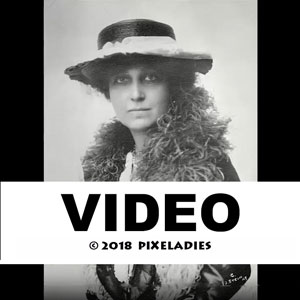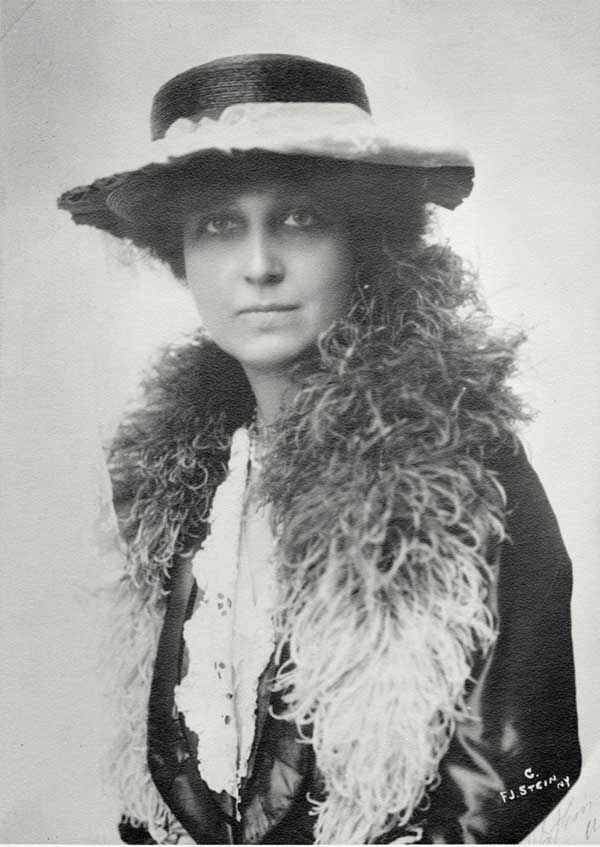As promised, we’re back with more about our project for the exhibition Deeds Not Words: The Power of Persistence, Celebrating 100 Years of Women’s Suffrage, which premieres in 2020. If you would like to read our first post on Katharine Dexter McCormick, click here. We usually start on our portrait projects by looking for a suitable photograph of the person in question. Then we request permission to use that photograph as a starting point for our art. Thank you, MIT Museum, for granting us permission to use this amazing photo of Katharine Dexter McCormick. Here is how we went from photograph to suitable cartoon:
Posterize
Once we have a digital photo of our subject, we open the image in Photoshop and use the posterize adjustment layer to see if we can make a usable image that contains just a few values. We thought you might like to see some of the settings we try, so here’s a little video.*

Color Decisions
After we have the cartoon, we start cutting out words and phrases from magazines and newspapers. Luckily, we had been collecting words about women for other projects, so we had quite a stash to choose from. Most of the time we try to choose text in the color we want. Here’s one of our really successful quilts with lots of colors. It’s part of The Reader’s Alphabet, a series of 26 quilts we were commissioned to make.
We love the text we get from the Economist magazine, not only because of the catchy and often “punny” titles but because of the color of those titles. We have even given it its own special color name: Economist Blue. Depending on what it’s mixed with, it can appear blue or gray. Here’s a close-up of Mitsuye Endo’s face in the collage for What Does an American Look Like?, where we used a lot of Economist Blue.
After much discussion, we decided to try something different for Katharine. This time our collage is made with black text on white paper.
It sure is a lot easier to find black and white text! We tried to create some contour lines with the text. In future posts in this series, we’ll talk more about the reasoning behind our color decisions, and you can decide if it was successful or not.
* By the way, the music is from the Library of Congress and is one of very few woman suffrage pieces in their online collection. Daughters of Freedom, the Ballot be Yours was performed by the “Music for the Nation” Singers who are Library of Congress staff members. Music by Edwin Christie. Lyrics by George Cooper.

